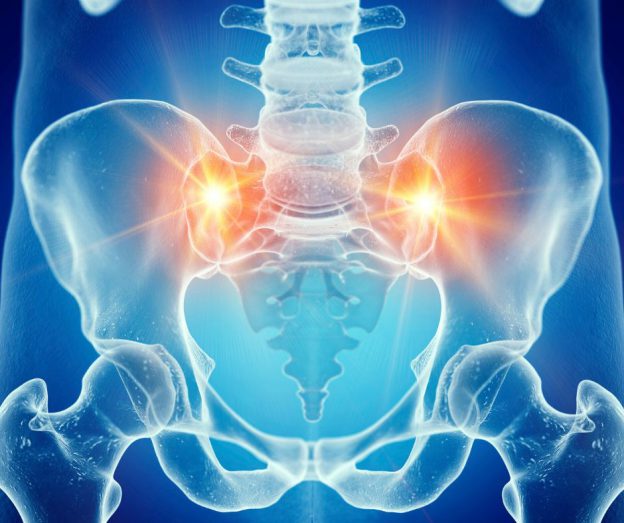Video: Experts Reveal the Alarming Signs and Symptoms of Bone Cancer—What You Need to Know


Watch the video to learn the key signs and expert advice on bone cancer symptoms and treatment.
Bone Cancer Sign & Symptoms: Cancer is spreading very fast in the country. In such a situation, bone cancer is also very dangerous. Know from the experts how dangerous bone cancer is. If someone gets it, what is its treatment and what precautions should be taken to avoid it.
Cancer is a term that evokes fear and concern due to its widespread impact and the severe consequences it can have on individuals and families. Among the various types of cancer, bone cancer is particularly dangerous because it can significantly affect mobility, quality of life, and overall health. In recent years, the incidence of bone cancer has been increasing, making it essential to understand its signs, symptoms, treatment options, and preventive measures.
This comprehensive guide delves into the intricacies of bone cancer, offering insights from experts on how dangerous this disease can be, the available treatment options, and the precautions that can help in prevention.
1. Understanding Bone Cancer: What Is It?
Bone cancer is a type of cancer that originates in the bones. Unlike cancers that spread to the bones from other parts of the body, primary bone cancer starts within the bone itself. The bones are vital structures in the body, providing support, protection, and facilitating movement. When cancer affects the bones, it can lead to severe pain, fractures, and other complications.
There are several types of bone cancer, with the most common being:
- Osteosarcoma: This type typically affects the long bones, such as those in the arms and legs, and is most common in children and young adults.
- Chondrosarcoma: Originating in the cartilage cells, chondrosarcoma generally occurs in the pelvis, hip, and shoulder areas and is more common in older adults.
- Ewing Sarcoma: A rare type that often affects the bones and surrounding soft tissues, primarily in children and adolescents.
Bone cancer is relatively rare compared to other cancers, but its impact can be devastating due to the critical role bones play in the body.
2. Bone Cancer Signs & Symptoms: Early Detection is Key
The signs and symptoms of bone cancer can vary depending on the location, size, and type of tumor. Early detection is crucial, as it significantly improves the chances of successful treatment. Here are some common symptoms associated with bone cancer:
A. Persistent Bone Pain
One of the most common symptoms of bone cancer is persistent and worsening bone pain. Unlike typical aches and pains, this pain does not improve with rest and may become more severe at night. It can be localized to the area where the tumor is growing, and as the cancer progresses, the pain may intensify, interfering with daily activities.
B. Swelling and Tenderness
Swelling in the affected area is another common symptom. This swelling may be accompanied by tenderness, making it painful to touch the area around the tumor. The swelling might not be immediately noticeable, especially in deep bones, but as the tumor grows, it can become more apparent.
C. Fractures
Bone cancer weakens the bones, making them more susceptible to fractures. In some cases, a person may experience a fracture after a minor injury or even during routine activities. These fractures often occur with minimal trauma and can be a sign that the bone has been compromised by a tumor.
D. Decreased Mobility
When bone cancer affects the bones in the legs, arms, or spine, it can lead to decreased mobility. The pain, swelling, and potential fractures make it difficult to move the affected limb or joint, leading to a loss of function and independence.
E. Unexplained Weight Loss and Fatigue
Unexplained weight loss and persistent fatigue are common symptoms of many types of cancer, including bone cancer. As the body tries to fight the disease, it can lead to a loss of appetite and energy, contributing to these symptoms.
F. Fever and Night Sweats
In some cases, bone cancer may cause systemic symptoms such as fever and night sweats. These symptoms are usually more common in advanced stages of the disease when the cancer has spread to other parts of the body.
3. How Dangerous is Bone Cancer? Expert Insights
Bone cancer is considered a dangerous form of cancer due to its ability to rapidly grow and spread to other parts of the body, particularly the lungs. The prognosis for bone cancer varies depending on several factors, including the type of cancer, the stage at which it is diagnosed, and the patient’s overall health.
A. Aggressiveness of the Cancer
Certain types of bone cancer, such as osteosarcoma and Ewing sarcoma, are known for their aggressive nature. These cancers can grow quickly and metastasize (spread) to other parts of the body, making treatment more challenging. The earlier these cancers are detected, the better the chances of successful treatment.
B. Impact on Quality of Life
Bone cancer can significantly impact a patient’s quality of life. The pain, decreased mobility, and potential for fractures can lead to a loss of independence and the need for assistance with daily activities. Additionally, the psychological impact of dealing with a cancer diagnosis can be profound, leading to anxiety, depression, and a decreased sense of well-being.
C. Survival Rates
The survival rates for bone cancer depend on various factors, including the type of cancer and its stage at diagnosis. For example, the five-year survival rate for localized osteosarcoma is around 70%, but this rate drops significantly if the cancer has spread to other parts of the body. Early detection and prompt treatment are crucial for improving survival rates.
4. Treatment Options for Bone Cancer
The treatment of bone cancer typically involves a combination of surgery, chemotherapy, and radiation therapy. The choice of treatment depends on the type, location, and stage of the cancer, as well as the patient’s overall health.
A. Surgery
Surgery is often the primary treatment for bone cancer, especially when the tumor is localized and can be removed. The goal of surgery is to remove the entire tumor along with a margin of healthy tissue to ensure that no cancerous cells are left behind. In some cases, limb-sparing surgery can be performed, where only the affected part of the bone is removed and replaced with a prosthesis or bone graft. However, in more severe cases, amputation may be necessary to prevent the spread of the cancer.
B. Chemotherapy
Chemotherapy involves the use of powerful drugs to kill cancer cells. It is often used in combination with surgery to shrink the tumor before surgery or to kill any remaining cancer cells after surgery. Chemotherapy is particularly effective in treating aggressive forms of bone cancer, such as osteosarcoma and Ewing sarcoma. However, it comes with side effects, including nausea, fatigue, hair loss, and an increased risk of infections.
C. Radiation Therapy
Radiation therapy uses high-energy beams to target and kill cancer cells. It is often used in cases where surgery is not possible or in combination with surgery and chemotherapy to ensure that all cancerous cells are destroyed. Radiation therapy can be particularly useful in treating chondrosarcoma, a type of bone cancer that is less responsive to chemotherapy.
D. Targeted Therapy
Targeted therapy is a newer form of treatment that involves drugs designed to specifically target cancer cells without affecting healthy cells. This type of therapy can be used in certain cases of bone cancer, particularly when other treatments have not been effective. Targeted therapy may have fewer side effects than traditional chemotherapy, but it is not suitable for all types of bone cancer.
E. Immunotherapy
Immunotherapy is another emerging treatment option that involves stimulating the body’s immune system to fight the cancer. While still being studied for bone cancer, immunotherapy has shown promise in treating other types of cancer and may become a more widely used option in the future.
5. Precautions and Preventive Measures
While the exact cause of bone cancer is not always known, certain risk factors can increase the likelihood of developing the disease. Taking precautions and preventive measures can help reduce the risk of bone cancer.
A. Awareness of Genetic Risk Factors
Some individuals have a higher risk of developing bone cancer due to genetic factors. For example, certain hereditary conditions, such as Li-Fraumeni syndrome or hereditary retinoblastoma, can increase the risk of bone cancer. Individuals with a family history of these conditions should undergo regular medical check-ups and genetic counseling to assess their risk.
B. Protecting Against Radiation Exposure
Exposure to high levels of radiation, whether through previous cancer treatments or environmental factors, can increase the risk of developing bone cancer. It is important to minimize unnecessary exposure to radiation and to follow safety guidelines when undergoing medical imaging or treatments that involve radiation.
C. Early Detection and Regular Screenings
Early detection is key to improving the prognosis for bone cancer. Individuals at higher risk, such as those with a family history of bone cancer or previous radiation exposure, should undergo regular screenings and be vigilant about any persistent symptoms, such as bone pain or swelling.
D. Healthy Lifestyle Choices
Maintaining a healthy lifestyle can also help reduce the risk of bone cancer. This includes a balanced diet rich in calcium and vitamin D to support bone health, regular exercise to strengthen bones, and avoiding smoking and excessive alcohol consumption, which can weaken bones and increase the risk of cancer.
6. Living with Bone Cancer: Coping and Support
A bone cancer diagnosis can be overwhelming, but with the right support and coping strategies, patients can manage the challenges they face. Here are some ways to cope with bone cancer:
A. Emotional Support
Dealing with cancer can be emotionally taxing, leading to feelings of fear, anxiety, and depression. It is important for patients to seek emotional support from loved ones, support groups, or mental health professionals. Counseling or therapy can provide valuable coping mechanisms and help patients navigate the emotional aspects of their diagnosis and treatment.
B. Pain Management
Pain is a common symptom of bone cancer, but it can be managed with the right approach. Pain management strategies may include medications, physical therapy, relaxation techniques, and, in some cases, complementary therapies such as acupuncture or massage. It is important for patients to communicate openly with their healthcare team about their pain levels.
Recent Posts
One Sleepless Night Can Weaken Your Immunity and Trigger Inflammation
Sleep is often regarded as a luxury in today’s fast-paced world, but scientific research continuously…
Thick Heart Syndrome: A Silent Threat to Millions in India
Heart disease remains one of the leading causes of death worldwide, and in India, cardiovascular…
Delhi Sees Surge in H1N1 and Influenza B Cases
Delhi is witnessing a sharp rise in flu cases, particularly Influenza B and H1N1 (commonly…
Woman Dies During MRI Scan Due to Medical Negligence
In early February 2025, a tragic incident occurred in Eluru, Andhra Pradesh, where a 61-year-old…
Holi and Eye Safety: Protect Your Vision During Festivities
Holi, the festival of colors, is one of the most vibrant and joyous celebrations in…
FDA Recalls Popular Skincare Products Over Cancer-Causing Chemical
In a major development, the U.S. Food and Drug Administration (FDA) has issued recalls for…


